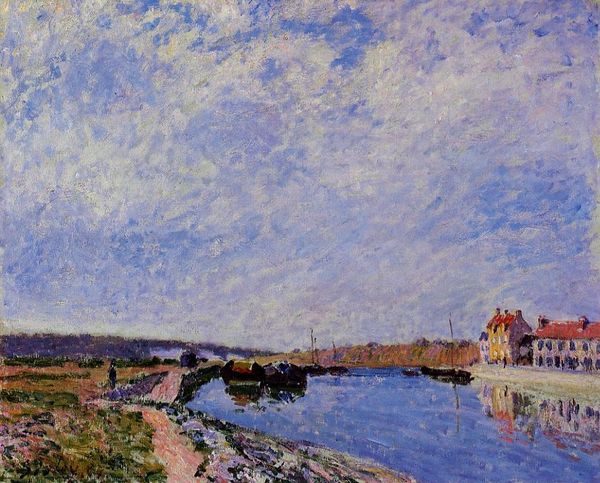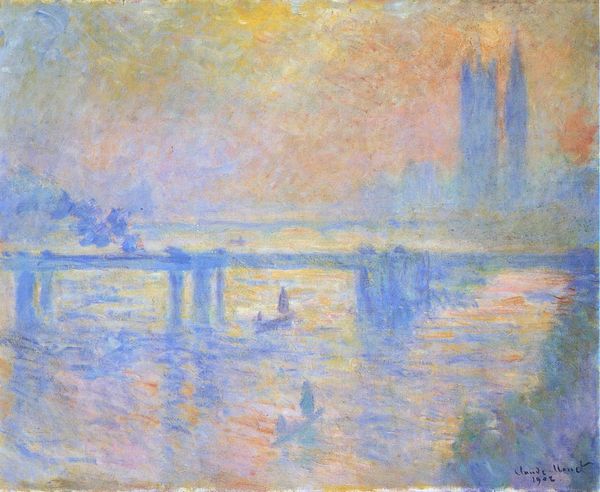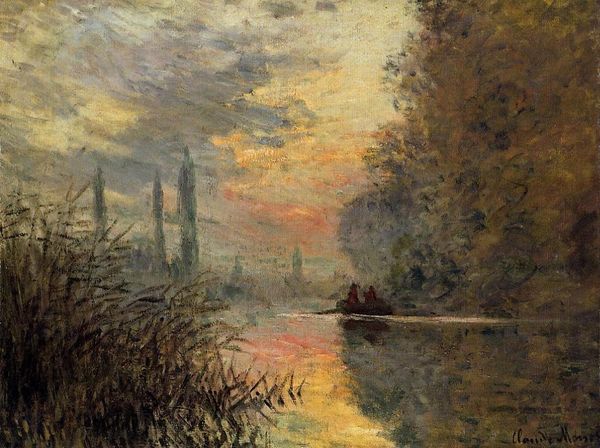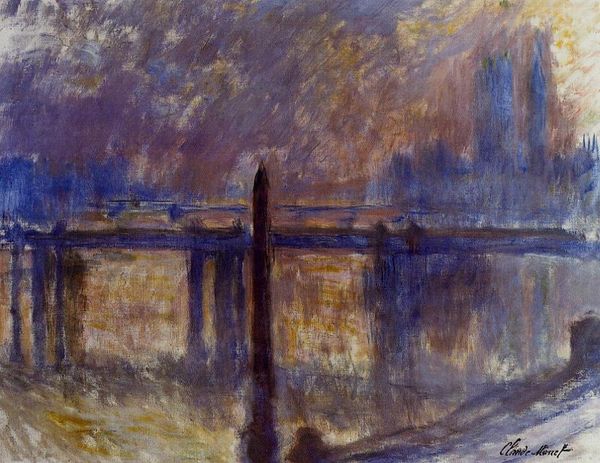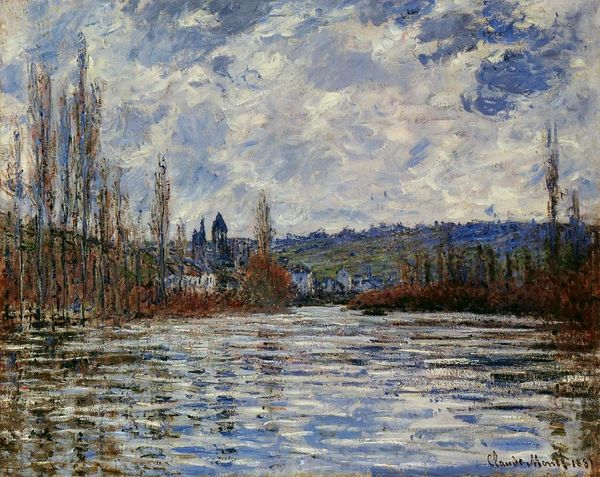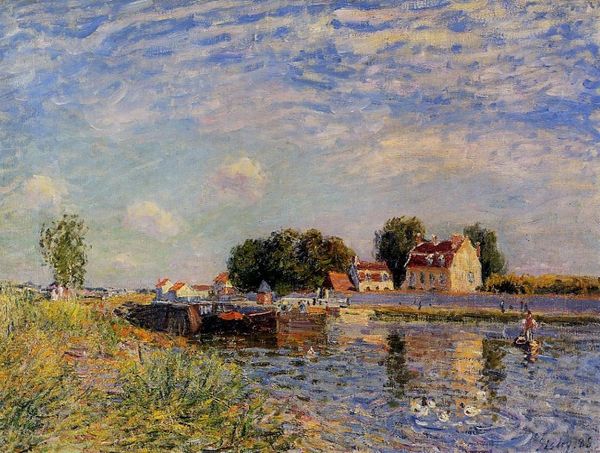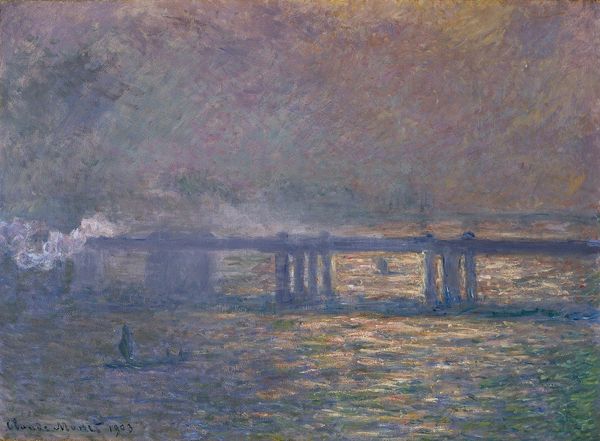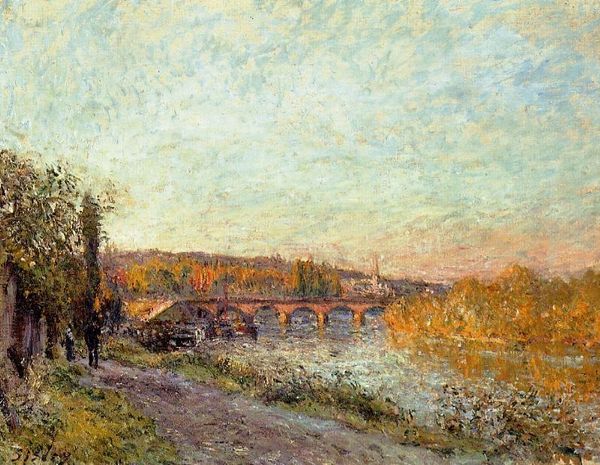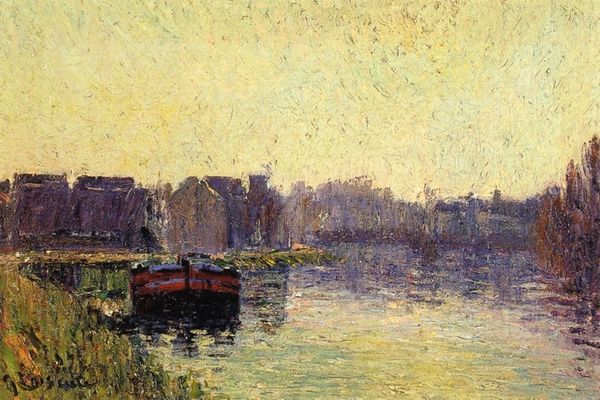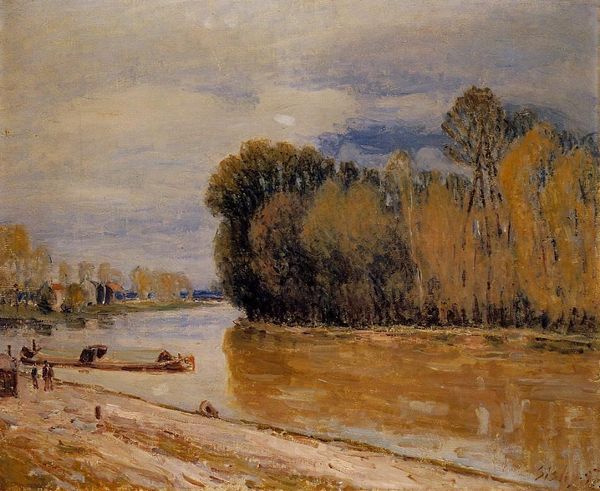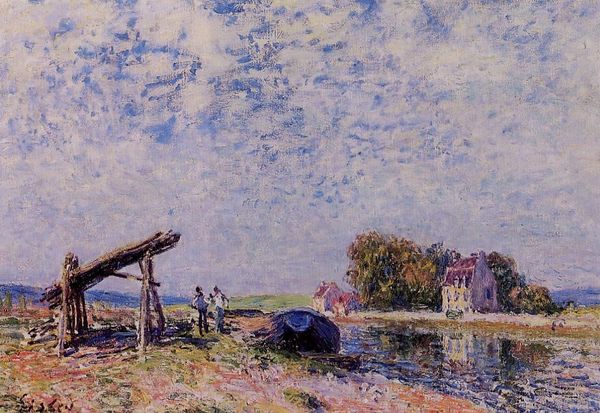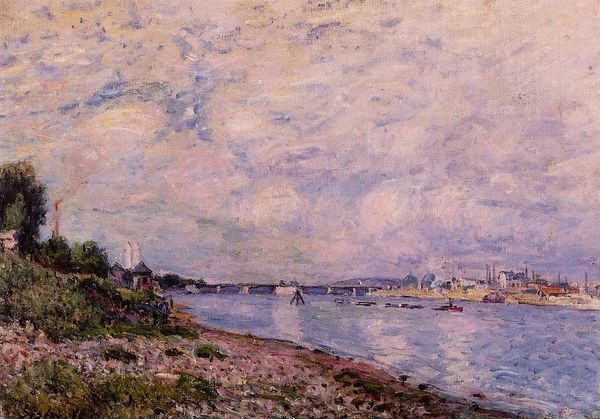
Copyright: Public domain
Art Historian: Editor: This is Claude Monet’s "Charing Cross Bridge, Reflections on the Thames," painted in 1901. The textures seem to almost melt into one another using oil paint, capturing such a hazy atmosphere. What do you make of it? Art Historian: This piece, like many of Monet’s London series, speaks volumes about the Industrial Revolution and its impact. Look at the scene. Does it romanticize industry, or critique it? Editor: It's beautiful, but I also feel a sense of… something lost? Was he making a statement about pollution? Art Historian: Monet was drawn to London's atmosphere, specifically the fog, which was often thick with industrial pollutants. But consider, who benefited from that industry, and at what cost? How do you think Monet, as a flâneur – a privileged observer – is positioned in relation to these questions of power and social justice? Editor: That's interesting… It feels like a separation. He captures it beautifully but at a distance. Art Historian: Precisely! And consider the art market. Wealthy collectors of the time often preferred aesthetically pleasing landscapes over overt social critiques. Could Monet be subtly commenting on this preference? On beauty obscuring harsh realities? Editor: I hadn't thought about it that way! It makes me consider how the consumption of art plays into wider economic and social structures of the period. Art Historian: Exactly! These fleeting impressions, like reflections on the Thames, invite us to look beyond the surface and interrogate the social context in which they were created and consumed. Editor: Wow, I see so much more now. Thank you for that perspective. It adds another layer of meaning to this seemingly simple painting.
Comments
No comments
Be the first to comment and join the conversation on the ultimate creative platform.
